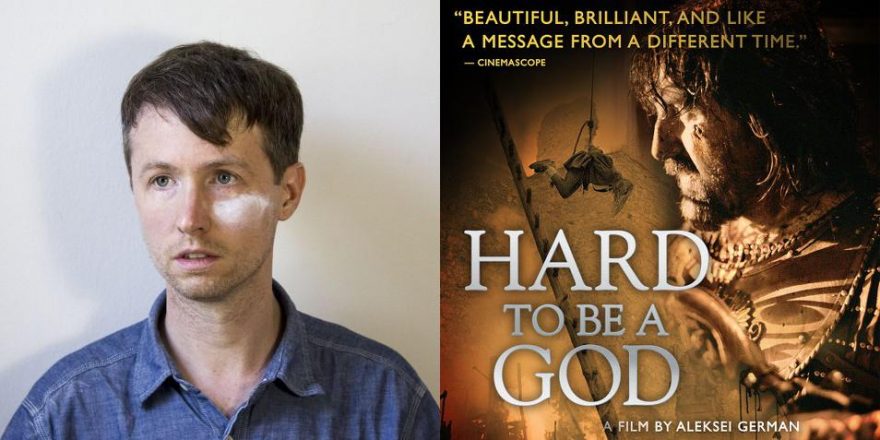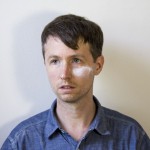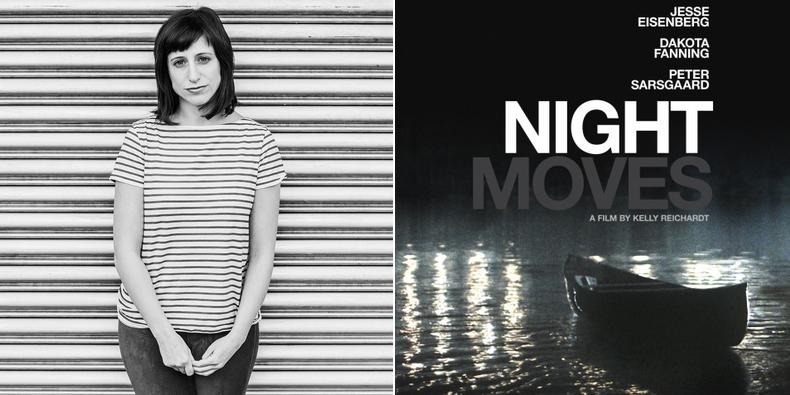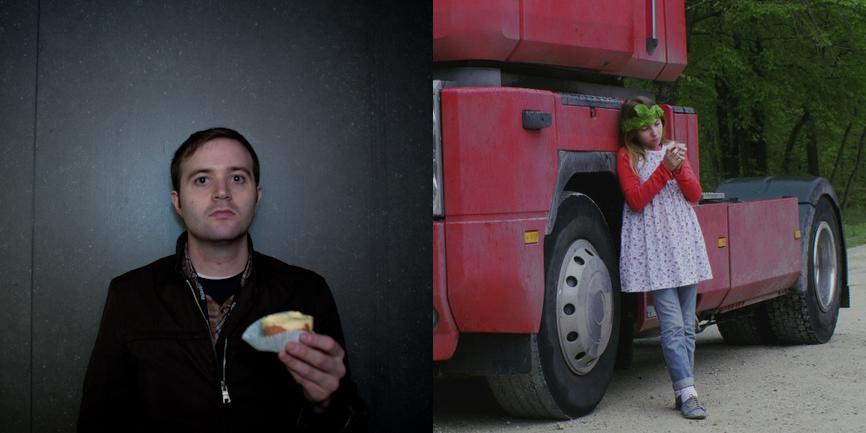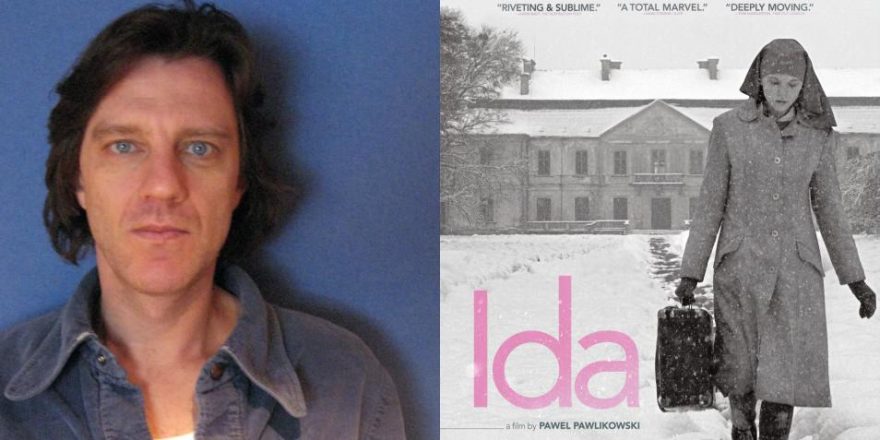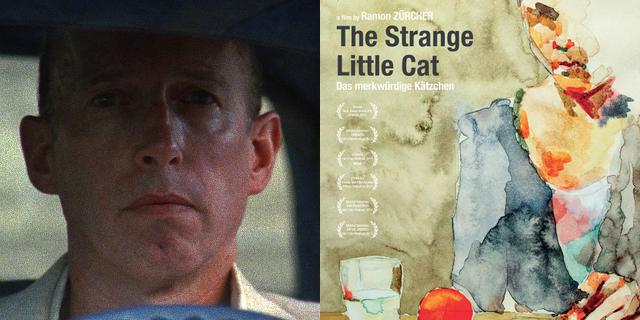In the years before I made films, I harbored a dream of becoming a Russian professor. Between 1998 and 1999, I spent 18 months in Russia falling in love with a country in the throes of an economic meltdown. Russia at the time was huge, unknowable, dangerous and unpredictable in the best way. It was also the place where I became interested in cinema, in a low-rent film class where we watched Russian classics like Alexander Nevsky. Although my once relatively fluent Russian has gone to hell, I know something about Russian mentality and the Russian soul (OK, those were the names of the classes I took).
I also harbor a certain dorky love of fantasy. One of the first foreign-language films I remember truly being blown away by was Aguirre, the Wrath of God, which I almost certainly rented just because of the box cover. This continues — I can happily debate the merits of Tony Stone’s balls-out Severed Ways (worth seeing) vs. Nicolas Winding Refn’s similar Valhalla Rising (not worth seeing). I also love, more than anything, films that most people would describe as either difficult or uncompromising.
The definitive film for hardcore auterist art-house Russophile metalhead Dungeons & Dragons players, Hard to Be a God is, straight up, a masterpiece. It shits all over Andrei Rublev, both in literal terms (there’s a lot of feces in the film) and in sheer number of dwarves, and oh what a truly uncompromising work it is! Director Aleksei German spent over 40 years developing it from the novel by brothers Arkady and Boris Strugatsky (two other shamefully under-known Russian powerhouses), but circumstances were never quite right. Another version was made (with Werner Herzog in a lead role), and the German script languished. Perhaps that was to the benefit of Hard to Be a God, as over the decades German’s filmmaking became more and more unhinged (but never less than controlled), culminating in 1998’s legitimately batshit Khrustalyov, My Car! Finally in 2000, German and company began production on Hard to Be a God, with shooting continuing on and off for the next six years. The film then spent another seven years in post-production. Perhaps fittingly, German would not live to see his magnum opus finished — he died shortly before completing the sound mix, leaving it in the hands of his wife and son.
I think it important that this film be watched in a place with no escape. To watch it at home, with the ability to get up, diminishes a work like this. You simply must contend with this film on its own terms, not yours. With that in mind, I sat down to watch it at Anthology Film Archives on Superbowl Sunday. I was surprised to see about 50 other people in attendance — I wondered how long they’d last as I settled into a seat coated in a hard, tar-like substance. This seemed appropriate, as did the subzero theater temperature. Huddled under my coat, I could see my breath as this very cold film began.
There are a few basics you should know. Hard to Be a God takes place on another planet indistinguishable from medieval Russia. The protagonist, Don Rumata (Leonid Yarmolnik), is an Earthling scientist who has been sent to this planet along with a group of fellow scientists to study the planet’s inhabitants. This world has stalled pre-Renaissance, largely because the inhabitants kill off anyone deemed to be a “wise guy” (a member of the intelligentsia). Rumata and his fellow scientists live secretly among the inhabitants, and are allowed to nudge society along but not to kill anyone. The locals, mostly idiots, believe that Rumata is the son of a God. (The setup is strangely similar to Idiocracy.) The question the film begs: When the world is entirely composed of holy fools, is Rumata the holy wise man? Or is he the fool?
Confused? Stop trying. It really doesn’t matter. This is not a film about the story, and if you walk into it expecting a coherent plot, you will be sorely disappointed — about a third of the Anthology audience walked out in the first hour. This isn’t easy stuff.
So, if not a story, what is this thing we are confronted with? The overused “fever dream” analogy here seems too tame — this is the stuff of DMT-fed nightmares, a look into a true hell, a recognition of the absurdity of the human condition (see Lermontov’s “The Fatalist”). Oh yes, and it’s also kind of a comedy.
Hard to Be a God is caked in enough shit, mud and bodily fluids to make Pasolini puke. While it opens on an almost lovely, snow-draped medieval landscape, the second shot is a vignetted closeup of a man’s ass, which promptly shits on the faces of the two men beneath it. And from there the film rarely relents. Despite this being my second viewing, and despite trumpeting its praises for months, 20 minutes in I wondered if I could handle it. I’m glad I stayed. And I may even watch it again (in the theater) because, while this may be the queasiest film of the millennium, it’s also one with many rewards.
This is not a lumbering beast of a three-hour film. It is not Béla Tarr. The takes are longish, but don’t mistake this for “slow cinema.” Instead, the thing roils like an eel, pulled from the water and thrown into a boat: coated in slime, slamming itself into the boards, hissing, unpredictable, disgusting, pissed off but alive.
The camera constantly searches, controlled but wild. There is so much going on at all times, it’s physically sickening, but there is always something amazing to see. You could commit to watching this single film over and over, and you would still consistently be surprised. Characters are always up to something, often in the background. The Bruegel inspiration is obvious, not just in the mise-en-scène, but in that the viewer could spend a lifetime finding hints of new scenes, new details playing out. Can it be that Hard to Be a God doesn’t merely pull from its obvious and lofty inspirations (Russian favorite Bruegel and goth-kid favorite Bosch), it matches them? And how does the film manage to make hackneyed clichés like a plague mask fresh again?
Hard to Be a God is without much precedent, but the closest comparison I can come up with is Elem Klimov’s disquieting Soviet-era masterwork Come and See. Like that movie, this is pure immersion — a work you experience firsthand from the inside. Despite the realness of the world, the performances are heavily stylized. Characters constantly look and leer into the camera and laugh like idiots. Every action is hyper-realized. When Don Rumata licks the reed of his oboe, he does it in the most exaggerated, foul way possible. Everything reeks of sex, shit and death. While the cast might be made up of over 100 actors, there are probably only enough teeth to go around for about 40. They pick their noses and ears. They spit, a lot, often into other characters’ faces. Did I mention Don Rumata plays the oboe?
Characters talk to, stare into and shove things directly into the camera. The practical explanation is that Don Rumata has a sort of medieval GoPro embedded in his forehead, but the convention of Rumata’s perspective as justification for this doesn’t really stick (it constantly happens even when he is front of the camera). I’ve always included moments of direct address in my own films, and I was always taught that this convention loses its power if done more than once (I consciously did just this in my new film). Often, addressing the camera makes the audience aware of the filmmaker’s presence, but here it has the opposite effect — the spectator feels included in the world. Our presence is reinforced in other ways. Things very often dangle in front of the camera and obstruct our view — entrails, sausages, ropes, a pig’s head, even chicken legs at one point. We are not granted the same omniscience as a typical viewer. Perhaps what makes Hard to Be a God difficult to take is that the viewer becomes a sort of active visitor; we are also characters studying this world.
Difficult though the film is, there are many pleasures and surprises to be found herein. My favorite: as Don Rumata enters his lair, an owl lands on his shoulder from seemingly out of nowhere. He tries halfheartedly to shrug it off and as he walks inside, the owl’s wings flap. Or perhaps another: a bloodhound, shot through with an arrow, slowly lumbers over a foggy hillside in a moment of silence. Elsewhere, a knife rubbed against a cloth produces flame. There is magic here. This is aided by the most striking black-and-white photography that I’ve seen in years (go ahead and talk about Nebraska after watching this).
The sound of the film is a pure cacophony of idiot noises, laughter, chickens, but at moments it settles into silence and with it the camera. In these breaks, we know a scene has ended. You may not quite register what you were just in the middle of, but you know it’s over for now, and you rest a moment until it starts again. These tonal shifts are the moments when you realize that you are in the hands of a master filmmaker.
Perhaps Hard to Be a God’s most unforgettable image is also its turning point, the moment when Don Rumata decides he has truly had enough and smears his face (always clean until now) with tar. At this breathless moment, we know that Don Rumata has changed. “I’ll kill everyone here,” he whispers a few moments later, when his enemies come knocking. This time he means it, and the massacre begins. We never see it happen — only Rumata lives, everyone else is eviscerated. As the fog clears, he sits in a puddle, surrounded by the dead, midway between resigned laughter and a splitting headache. How did he do it? we’re left wondering. Is he a god after all?
I know I love a film when afterwards I have nothing to say and I don’t know what to do with myself. Two days later, I can say only this: we have perhaps the final masterpiece of modernist filmmaking having its first run in U.S. theaters. It is a demanding work to contend with, to be suffered through. You should see it, because it is, and it will likely never be again, certainly not on this scale and with this much vision. It is simply an untouchable work — huge, enigmatic, dangerous, and unpredictable. It exists, and for that we should be thankful, and after we watch it maybe we can smirk at the absurdity of it all while we nurse our headaches.



